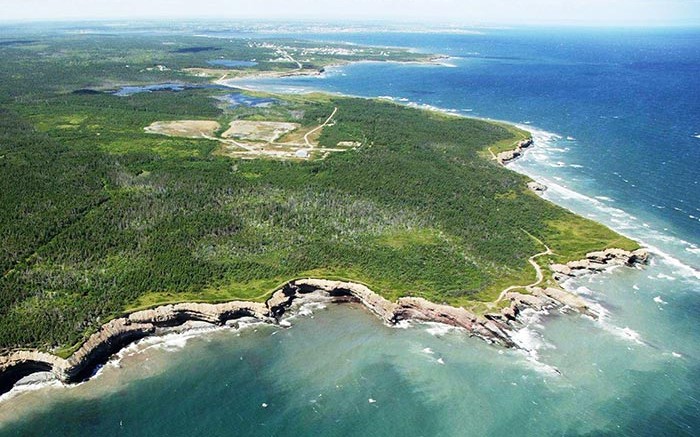VANCOUVER — Attending the Coal Association of Canada’s annual gathering here in downtown Vancouver, it’s clear it’s a pretty terrible time to be in the coal business, and that goes for both the metallurgical (met or coking) and thermal sectors of the industry. Green energy reforms in the U.S. have made thermal coal a bit of a dirty word, while industrial slowdowns in Asian economies — which played a large part in the coking coal boom of the late 2000s — haven’t helped the matter.
Worldwide industrial demand growth drove large-scale mergers and acquisitions among U.S. producers and integrated miners looking to capture strong margins, as met coal prices hit highs in 2011. The global economic recession, however, has triggered a slew of bankruptcies, as producers find themselves over-leveraged in tough markets.
U.S. coal miners Alpha Natural Resources, Walter Energy and Patriot Coal have all filed for bankruptcy protection this year amid an industry slump that has driven quarterly benchmark prices for steelmaking coal to a 10-year low. Prices for met products have fallen 72% over the past four years, from a high of US$331 per tonne in 2011 to nearly US$90 per tonne in early July.
During his conference presentation, Virginia-based FBR Capital Markets’s managing director Kurt Oehlberg described the coal industry as undergoing its yet another “transformation” that historically involves volatile commodity swings and prolific dealmaking.
Oehlberg argued that the time is ripe for new coal outfits to find “gems in the rough” that could pay dividends when markets recover.
“There were, unfortunately, a lot of transactions completed at very difficult or very high-priced times in the met coal market. We’re now in a challenging environment to try to stay alive. Discipline remains the order of the day, so those in bankruptcy are being forced to restructure and reorganize portfolios. Many companies are looking for a realistic core basket of assets around which they can survive.”
In the international sphere , he said there’s “less likelihood of dramatic restructuring, but they’re all looking at their portfolios and refocusing. That means there is an active transaction environment. Most of us realize that pretty much any project you wanted to discuss right now would be on the table. Almost everything is for sale.”
But transactions can be a tricky business when the commodity in question has an uncertain outlook. According to Oehlberg, there is plenty of demand on the buy side for coal assets, but companies with quality mines are hesitant to sell, since these projects often service high debt loads.
Industry-altering deals aren’t yet a reality. In late 2014, Peabody and Glencore (LSE: GLEN) merged a pair of neighbouring Australian mines to save costs, while Alpha sold off its Amfire assets in Pennsylvania to Rosebud Mining for US$86 million. Blackhawk Mining recently picked up most of Patriot’s operations in a bankruptcy auction, which included measures to “appease creditors.”
“There are better acquisition opportunities out there than we’ve seen for over a decade,” Oehlberg said.
“More often than not the gems are diamonds in the rough. These are assets that need to be worked on and honed to become an asset that supports a new company. These assets tend to be a little cheaper because you have to spend money, and someone has to de-risk it. We all want excellent coal quality, long-life reserves, low cash costs and good infrastructure. But you won’t find all of that at a good valuation. We need to go into tough places and figure out the upside.”
Virginia-born coal magnate Christopher Cline has already waded into the acquisition market and picked up a pair of coal assets in Canada. Cline’s new private company Cutlass Collieries is on the lookout for undervalued projects that fit the so-called “gem” criteria.
In late 2014, Cutlass picked up a 75% interest in the fully permitted Donkin coal project in Nova Scotia from Glencore for an undisclosed amount.
The company hopes to hit production in early 2016, and produce thermal coal for Canadian and export markets.
Cutlass followed up by acquiring Coalspur Mines (TSX: CPT; ASX: CPL) and its Vista coal project in Alberta for US$12 million in early March.
“We’ve embarked on a few international endeavours,” Cutlass CEO Paul Vining, who previously helmed Alpha, told conference attendees. “Somebody had asked who has ‘dry powder,’ or, in other words: ‘Who else is buying?’ Look at who is acquiring the bonds of the coal companies in the U.S., because that’s a proxy on who is making a bet on coal. When we looked at Donkin we analyzed logistics, cost structures, access to ports, the resource and the local workforce.”
Vining said Vista is “a great low-cost project, but it’s a long way from a port. We’ll take a look at the mine design, and do things a little more economically. It’s a two-year build out once you get started, so we need a little light at the end of the tunnel. It’s a bit of a longer play, though it’s permitted and ready to go.”
BMO Capital Markets analysts said in late August that North American thermal coal is one of the “most challenged” sectors within its metals and mining coverage. Meanwhile, BMO analyst Jessica Fung wrote in mid-September that the outlook for met coal is “relatively weak” due to falling steel and scrap prices.
Oehlberg wrapped up his talk by noting that “investors are interested in finding a way to position themselves for the upturn, and though financial markets are guarded, equity players are warily watching what is occurring in the coal industry.
“There are things that will change the marketplace and there are investors who want to provide capital to the right management team looking at the right gem. The world needs reliable electricity, and we’re shooting ourselves in the foot with some of these beliefs in certain forms of energy that defy logic and economic assessment.”


Be the first to comment on "Optimists see ‘gems’ in besieged coal markets"